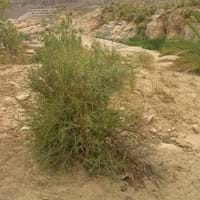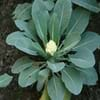Life Span
Annual or Biennial
Perennial
Type
Vegetable
Flowering Plants, Shrub
Origin
Europe, Northern Africa, Asia
North Africa
Types
Not Available
Not Available
Number of Varieties
Not Available
Habitat
Coastal Regions, Marshy ground, Wet ground
Desert, Rocky Mountains
USDA Hardiness Zone
Not Available
Not Available
AHS Heat Zone
9-3
Not Available
Sunset Zone
Not Available
Not Availble
Habit
Upright/Erect
Bushy, Evergreen
Flower Color Modifier
Bicolor
Bicolor
Fruit Color
Tan, Brown
Black, Blue
Leaf Color in Spring
Light Green
Green, Dark Green
Leaf Color in Summer
Green, Light Green
Dark Green
Leaf Color in Fall
Green, Light Green
Green, Dark Green
Leaf Color in Winter
Not Available
Green
Leaf Shape
Irregular
Ovate
Plant Season
Spring, Summer
Summer
Sunlight
Full Sun
Full Sun
Type of Soil
Loam
Clay, Loam, Sand
The pH of Soil
Neutral, Alkaline
Acidic, Neutral
Soil Drainage
Well drained
Moist but well drained
Bloom Time
Late Spring
Late Summer, Summer
Tolerances
Drought
Moisture
Where to Plant?
Container, Ground
Container, Pot
How to Plant?
Seedlings, Transplanting
Seedlings, Semi-hardwood cuttings
Plant Maintenance
Low
Medium
Watering Requirements
Keep ground moist, Requires regular watering
Needs less watering
In Summer
Lots of watering
Ample Water
In Spring
Moderate
Average Water
In Winter
Average Water
Less Watering
Soil pH
Neutral, Alkaline
Acidic, Neutral
Soil Type
Loam
Clay, Loam, Sand
Soil Drainage Capacity
Well drained
Moist, Well drained
Sun Exposure
Full Sun
Full Sun
Pruning
Remove damaged leaves, Remove shoots
Prune after flowering, Prune for shortening long shoots, Remove dead or diseased plant parts
Fertilizers
Less fertilizing
Any balanced general purpose fertilizer
Pests and Diseases
Bacteria, Downy mildew, Fungal Diseases, fungus, Mosaic viruses, Pink Root, Red blotch
Healthy tree
Plant Tolerance
Frost
Moisture
Flower Petal Number
Single
Not Available
Fragrant Bark/Stem
Yes
Yes
Foliage Texture
Coarse
Fine
Foliage Sheen
Glossy
Glossy
Attracts
Insects, Mice, Rodents, Spider Mites
Butterflies
Allergy
Irritation to stomach
Not Available
Aesthetic Uses
Not Available
Showy Purposes
Beauty Benefits
Good for skin, Improve skin condition, Moisturizing, Skin Problems
Acne, Good for skin
Environmental Uses
Air purification, Food for animals, Food for birds, Food for insects
Air purification, Food for birds
Medicinal Uses
Cancer, Combats Stress, Eye Problems, High blood pressure, High cholestrol, Indigestion, Inflammation, Weight loss
Antibacterial, anti-cancer, Antidiabetic, Heart problems, Kidney problems, Respiratory Disorders, Thyroid problems
Part of Plant Used
Leaves, Seeds
Flowers, Leaves
Other Uses
Employed in herbal medicine, Oil is used in perfume, soaps, creams, etc., Used As Food, Used for its medicinal properties, Used as a spice
Used as essential oil, Used in herbal medicines
Used As Indoor Plant
Yes
No
Used As Outdoor Plant
Yes
Yes
Garden Design
Container, Edible, Herb / Vegetable
Container, Edible, Fruit / Fruit Tree, Shade Trees, Tropical
Botanical Name
APIUM graveolens
Myrtus nivellei
Common Name
Celery
Saharan myrtle
In Hindi
अजवायन
Saharan myrtle
In German
Sellerie
Saharan myrtle
In French
Céleri
myrte subsaharienne
In Spanish
Apio
mirto subsahariana
In Greek
Σέλινο
Σαχάρας μυρτιά
In Portuguese
Aipo
murta Saharan
In Polish
Seler
mirt Subsaharyjskiej
In Latin
apium
myrto Saharan
Phylum
Tracheophyta
Magnoliophyta
Class
Magnoliopsida
Magnoliopsida
Family
Apiaceae
Myrtaceae
Clade
Angiosperms, Asterids, Eudicots
Angiosperms, Eudicots, Rosids
Tribe
Apieae
Not Available
Subfamily
Apioideae
Not Available
Number of Species
Not Available
Difference Between Celery and Saharan Myrtle
If you are confused whether Celery or Saharan Myrtle are same, here are some features about those plants to help you choose better. Many people think that these two plants have the same characteristics, but one can see Celery and Saharan Myrtle Information and learn more about it. Fertilizers required for proper growth of Celery are Less fertilizing, whereas for Saharan Myrtle fertilizers required are Any balanced general purpose fertilizer. Hence, one should know the basic difference between Celery and Saharan Myrtle if you are planning to have them in your garden to enhance its beauty.
<
Flowering PlantsImportance of Celery and Saharan Myrtle
Want to have the most appropriate plant for your garden? You might want to know the importance of Celery and Saharan Myrtle. Basically, these two plants vary in many aspects. Compare Celery and Saharan Myrtle as they differ in many characteristics such as their life, care, benefits, facts, etc. Every gardener must at least have the slightest clue about the plants he wants to plant in his garden. Compare their benefits, which differ in many ways like facts and uses. The medicinal use of Celery is Cancer, Combats Stress, Eye Problems, High blood pressure, High cholestrol, Indigestion, Inflammation and Weight loss whereas of Saharan Myrtle is Antibacterial, anti-cancer, Antidiabetic, Heart problems, Kidney problems, Respiratory Disorders and Thyroid problems. Celery has beauty benefits as follows: Good for skin, Improve skin condition, Moisturizing and Skin Problems while Saharan Myrtle has beauty benefits as follows: Good for skin, Improve skin condition, Moisturizing and Skin Problems.
Compare Facts of Celery vs Saharan Myrtle
How to choose the best garden plant for your garden depending upon its facts? Here garden plant comparison will help you to solve this query. Compare the facts of Celery vs Saharan Myrtle and know which one to choose. As garden plants have benefits and other uses, allergy is also a major drawback of plants for some people. Allergic reactions of Celery are Irritation to stomach whereas of Saharan Myrtle have Not Available respectively. Having a fruit bearing plant in your garden can be a plus point of your garden. Celery has no showy fruits and Saharan Myrtle has no showy fruits. Also Celery is not flowering and Saharan Myrtle is flowering. You can compare Celery and Saharan Myrtle facts and facts of other plants too.





